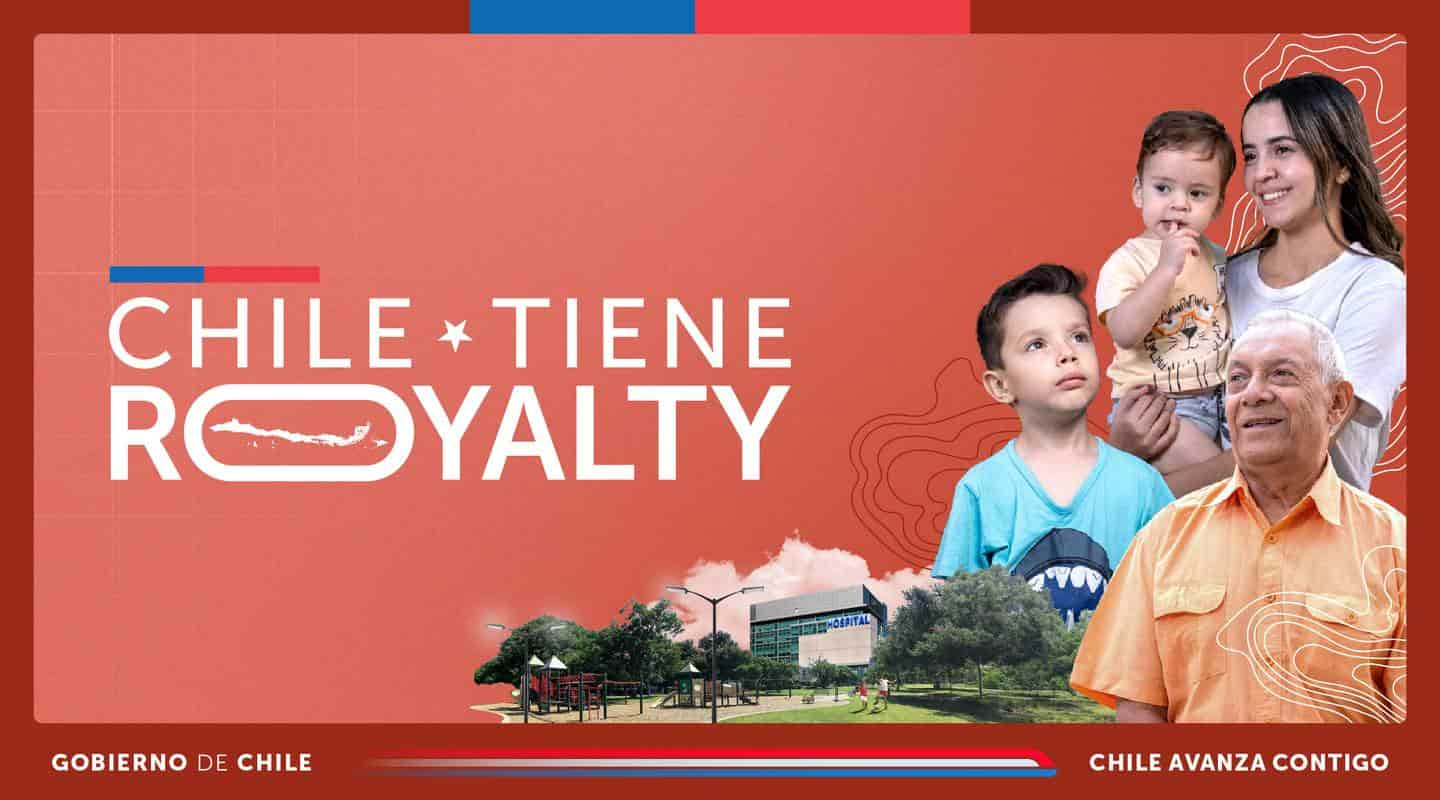The Mining Royalty Law came into effect in January 2024, after being approved by Congress in 2023 following several years of deliberation and subsequently enacted by President Gabriel Boric.
This year, we will allocate more than 218 billion pesos in unrestricted funds to the municipalities benefiting from this mechanism.
Below, you can find answers to key questions about the mining royalty and how it will benefit millions of Chileans.
What is the purpose of implementing the mining royalty in Chile?
The main goal of the mining royalty is to improve the quality of life for millions of Chilean families by providing more resources to municipalities.
This will bring tangible changes to the lives of Chilean families, who will witness its direct effects in their neighborhoods.
Another objective of the Mining Royalty Law is to ensure a fairer distribution of the country’s wealth.
How much revenue does the Mining Royalty generate?
The Mining Royalty Law will generate $1.35 billion annually starting in 2025.
From the total revenue, $450 million will be allocated to regional development.
Half of these funds will go to all regional governments through the Productivity and Development Fund, while the other half will be distributed to 90% of the country’s municipalities through two mechanisms:
- Territorial Equity Fund, distributed among municipalities that rely heavily on the Municipal Common Fund.
- Mining Municipalities Fund, aimed at compensating mining municipalities that directly experience the externalities of mining activities.
This year, through the first distribution (carried out in four installments), we will transfer funds that will directly benefit 12 million people.
A total of 218 billion pesos will be allocated for 2025 to address the most urgent needs of each municipality.
What are the benefits of the Mining Royalty?
The mining royalty ensures a better future for every region and municipality in Chile. It means a better quality of life for families, more resources for municipalities to enhance security, improve public spaces and infrastructure, and strengthen healthcare and education services.
It also ensures greater justice for mining municipalities, allowing them to retain part of the resources generated in their territories.
Simply put, the mining royalty provides fresh funds to municipalities, improving the lives of 12 million people.
How does the Mining Royalty work?
The mining royalty is a specific tax for large mining companies, a common practice worldwide, recognizing that the industry exploits scarce and non-renewable natural resources.
This mechanism aims to generate fair and efficient revenue collection to increase resources for regions while promoting economic development.
The Mining Royalty Law seeks to enhance the quality of life in all regions of the country. For this reason, it will distribute funds to about 90% of municipalities across various regions, reducing income disparities between municipalities and addressing the externalities of mining activities in affected communities.
How can municipalities use the resources provided by the mining royalty?
Municipalities receiving mining royalty funds can use them freely based on their most pressing needs.
In 2024, we saw examples of spending, such as the purchase of security equipment, the repair of public spaces, and the establishment of municipal pharmacies—initiatives that improve people’s lives.
For instance, a municipality with an additional budget of 700 million pesos could implement the following improvements:
- Install around 200 security cameras.
- Set up more than 150 new streetlights.
- Invest in 60 new wells for potable water.
- Improve electrical infrastructure and public lighting, benefiting over 8,000 homes.
How will municipalities and regional governments be monitored to ensure proper use of the mining royalty funds?
The mining royalty strengthens municipal autonomy, allowing local governments to allocate funds according to their needs.
The law does not require formal expense reports but mandates an annual report on fund usage. This report must be submitted in March of the year following its execution to the Undersecretariat of Regional and Administrative Development (Subdere).
Subdere, in turn, must report on fund usage to Congress and the Comptroller General’s Office.
This transparency allows citizens to track how funds are spent and provides a valuable opportunity to assess the impact of these resources.



